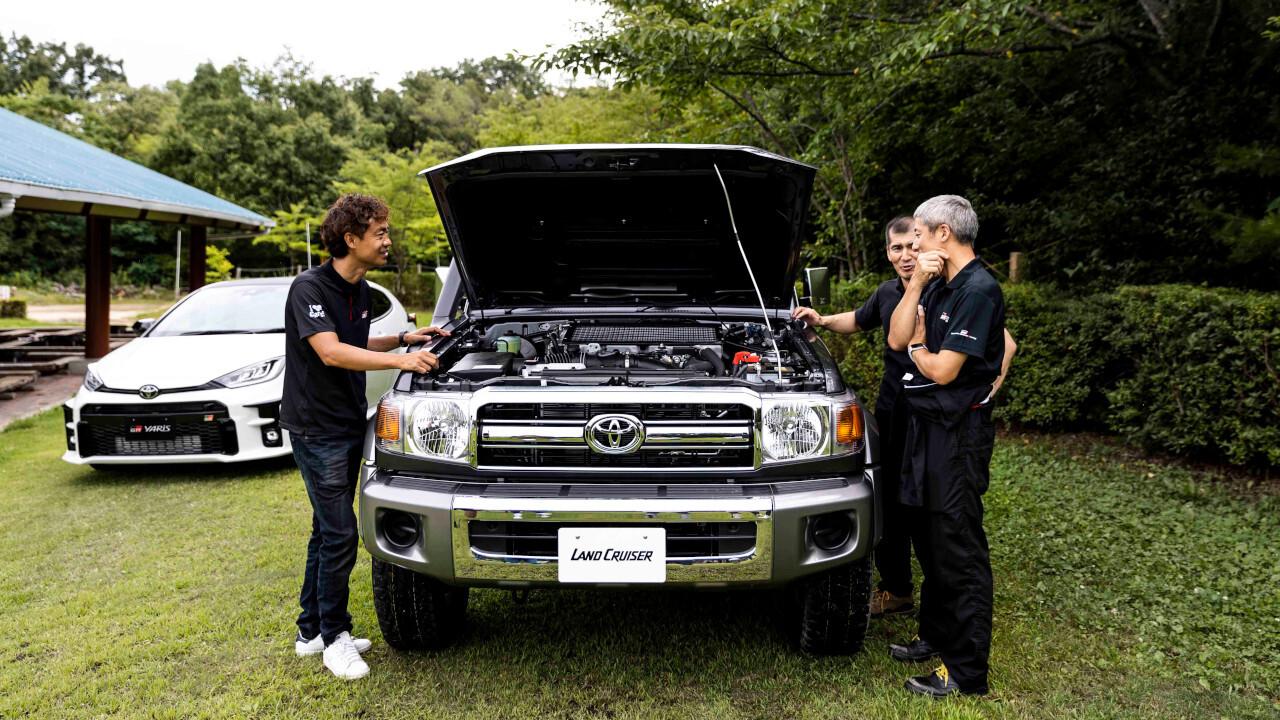
Two engineers in charge of totally different vehicles, the Land Cruiser and GR Yaris, talk about each development approach to find their shared value and recent changes at Toyota.

Rallies are acceleration tests disguised as races
The automotive industry is going through the so-called “once-in-a-century period of profound transformation,” and user needs are also diversifying. In making cars that meet their needs, while adhering to Toyota’s tradition on the one hand, they engage in innovation on the other, which is what the Land Cruiser and GR Yaris have in common.
The former model continues to take on challenges in the Dakar Rally, while the latter continues its challenges in the WRC and Super Taikyu races. So, what is the meaning of motorsports to the development team? Sadayoshi Koyari, who has long been involved in the development of the Land Cruiser, answered this question.
Koyari
It was the Land Cruiser 80 Series that began taking part in the Dakar Rally in the mid-90s. Ever since attention became focused on the prototype (developed specially for the race) after it became the overall winner, we have intentionally taken part in the rally in the class of production cars.
That’s because it’s pointless for a prototype Land Cruiser to become the overall winner. A prototype (which differs from a production car) can’t fulfill the production Land Cruiser’s mission to be “a vehicle that allows people to go anywhere & everywhere and come back alive & safe.
Conversely, the Dakar Rally course has always been a route traveled daily by our customers since ancient times. So I believe holding a race on a road like that to see who’s fastest gives us an opportunity to further improve our vehicle’s performance.

The durability of the Land Cruiser and its drivability on rough terrain are unnecessary in daily life in countries like Japan where the road infrastructure is highly developed. But “like the waterproof performance of mechanical watches, they are features that offer security and satisfaction,” according to Koyari.
Juichi Wakisaka, a TOYOTA GAZOO Racing ambassador who served as a moderator of this interview, smiled in response to this saying he had always driven Land Cruisers because that was the kind of story that inspired him.
Koyari
One of the toughest routes in the world alongside the Dakar Rally is the Silk Way Rally stretching from Moscow to Beijing, and the Land Cruiser took part in it before. It’s close to the Silk Road, and I believe it is also a race to see who can travel fastest along a harsh road with a history stretching back forever.
Koyari said the durability, reliability and drivability on rough terrain verified in this way not only benefit customers directly, but also ensure their safety and security in daily life.
On the other hand, Naohiko Saito, who led the development of the GR Yaris, has firsthand experience of how the rally is a motorsport that is most closely tied to people’s daily lives.
Saito
TOYOTA GAZOO Racing has been taking part in rallies since 2017, but we’re required to use the unmodified bodies of production cars even in the top-category WRC, demonstrating how closely tied they are to the daily lives of our customers. The strengths of production cars are also the strengths of our cars in the WRC, and vice versa.
Behind the numerous wins are also numerous retirements, and it’s a constant cycle of breaking, fixing and improving through relentless development. I think Morizo (aka Akio Toyoda) decided to take part in the WRC because it’s the best way to make ever-better cars.

When Saito traveled to Finland before to test drive a WRC car on ice, he was surprised to find that a frozen lake on the property of the parents of a young Tommi Mäkinen Racing mechanic was being used as a test course.
Saito
In Finland, it’s apparently OK to drive cars on private property as soon as kids are able to reach the brake pedals with their feet, and at lunchtime, the mechanic brought out the rally car that he had been driving since elementary school. The mechanic had apparently been playing and doing jumps on his property like a WRC driver since he was little. It was a world that I would never have known about if I had just stayed in Japan making cars.
Getting covered in grease is part of being an engineer
In the world of rallies, cars will not finish races on tough courses unless their problems are fixed during the races, and they will be disqualified unless measures are implemented in time for the next race. That is why engineers must have an understanding of the on-site conditions at rallies to not only ensure the effectiveness of their development, but also to speed it up.
In response to the constant flow of requests they receive from on-site drivers, the two engineers agreed that they must act quickly at all times.
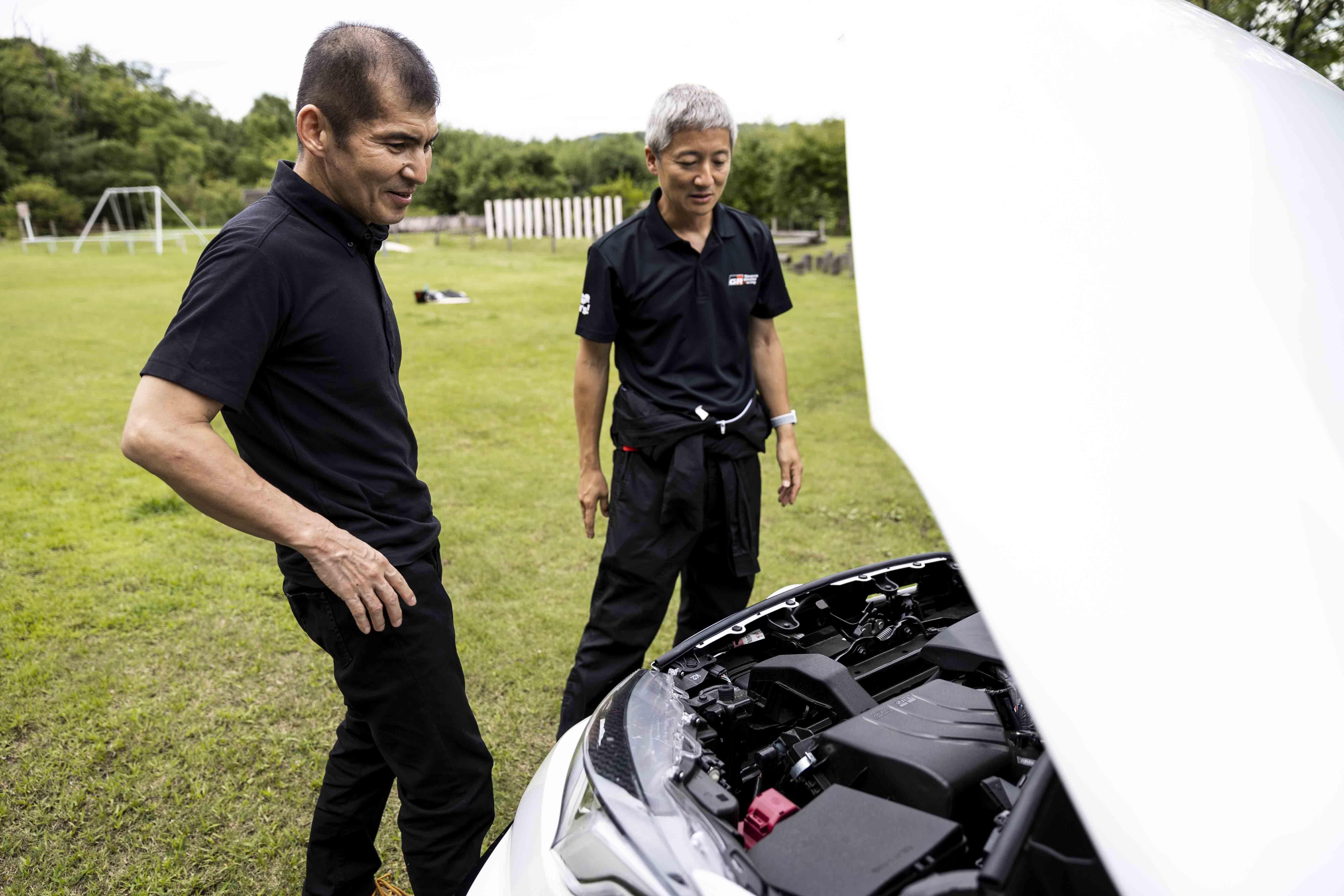
Koyari
As with motorsports, we continued development of the Land Cruiser to meet the needs of customers who get behind the wheel, but we constantly receive new requests in response to the improvements made. To meet these demands, all we can do is continue devoting ourselves to development.
Saito
I’m the kind of person who easily gets carried away, and as a person in charge of developing the GR Yaris, Morizo said to me, ‘Go no further than to chuckle to yourself if you get praised, then move on. That’s what engineers do.’ His message was that engineers must devote themselves to continual learning and never become complacent, and it’s a philosophy that remains etched in my heart even today.
Koyari
I too had many dreams, or things I wanted to do to change the Land Cruiser when I first became involved in its development. But one day, I realized that the ideal Land Cruiser is developed by the customers themselves.
That’s why I decided to become the most customer-oriented developer around when I was assigned to the post of Chief Engineer. I feel my job is to meet lots of customers from all over the world, and listen with sincerity to their opinions to develop the ideal Land Cruiser.
The TS (Toyota Standard) that was mentioned earlier can also hinder development. So, there were times when we would argue with the company saying, ‘Why do we have to stop there?’ or, ‘Is that what the customers really want?’
I think it’s the responsibility of engineers to overcome these issues. You have to think from the customer’s perspective, or you’ll lose sight of the reasons why they want to drive Land Cruisers.
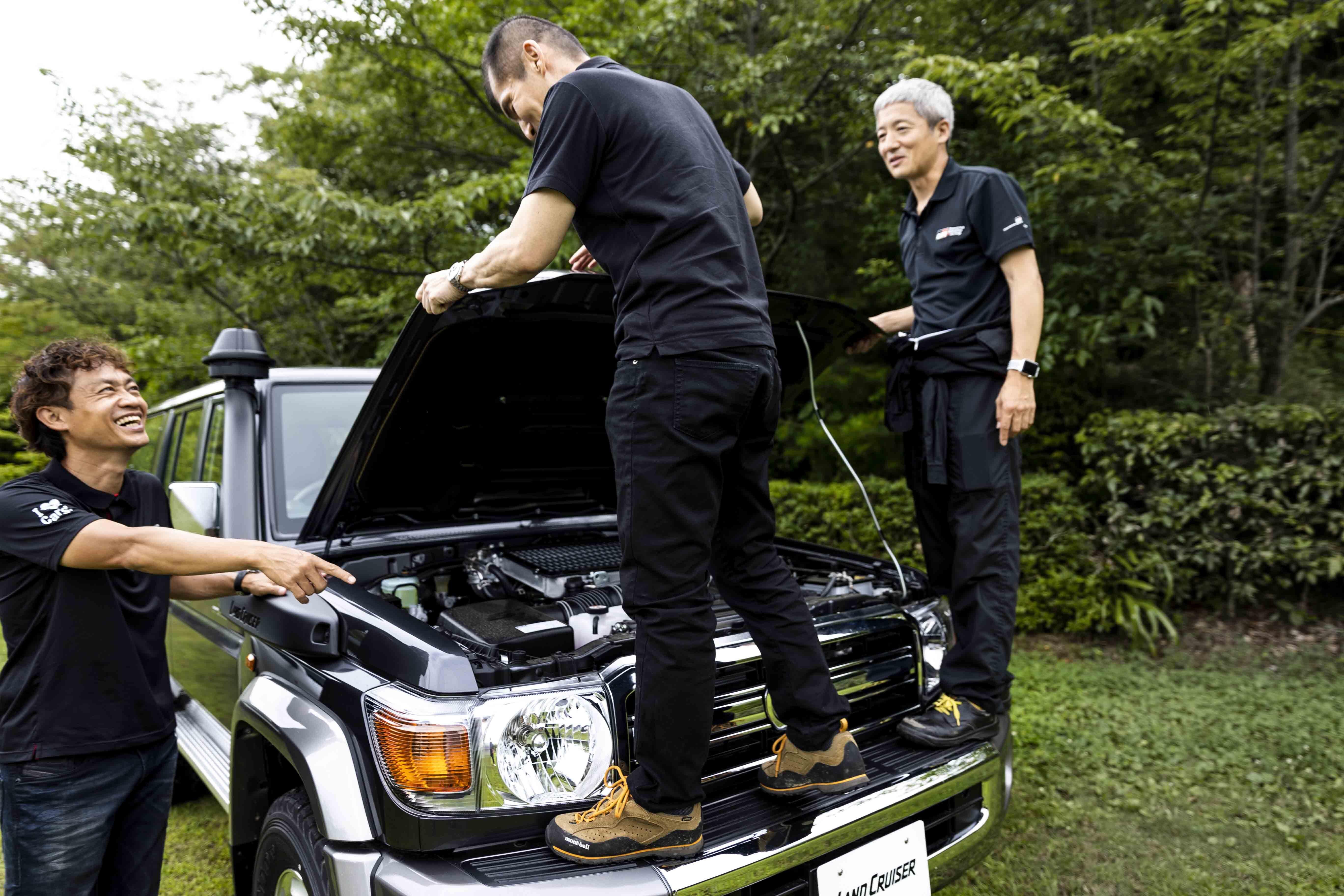
What people expect of cars changes over time, and the Land Cruiser has maintained its developmental style of always listening to the opinions of people on-site. However, Wakisaka pointed out, “But you never get praised by your customers, right?” to which Koyari responded with a wry smile.
Koyari
As I mentioned earlier that our customers are never really satisfied, they never praise us either, and although we’ve been making Land Cruisers for a long time, we’re never given credit for it within the company (laughs).
Wakisaka burst out laughing and turned to Saito as he continued.
Wakisaka
Instead of being manufacturer-oriented, the Land Cruiser has always continued its customer-oriented development, while that was the starting point for the GR Yaris, and what the two cars have in common is that Toyota’s engineers must avoid becoming conceited.
This is precisely the principle behind Toyota’s fundamental car making philosophy of “roads train people,” and it is what the two engineers have practiced even though their approaches and methods may have differed.
So, what are the two engineers’ thoughts on making cars and fostering young engineers in the future?
Saito said he wants to foster many chief engineers who aren’t afraid of getting their hands covered in grease, by taking the initiative in sticking their hands inside the engine room.
Saito
I want the young engineers of today to spend more time with their cars, which they don’t do enough of. I want them to know that our team has been learning on-site with ROOKIE Racing, and that we still have issues with the GR Yaris, which we want to expand horizontally to apply the solutions in making other cars.
I want to foster people who can take the initiative in working with cars, maintain them, and aren’t afraid to get their hands dirty in modifying them. So, I decided to hold a workshop on welding in the near future for our younger members. You need to understand the various types of steel in order to weld.
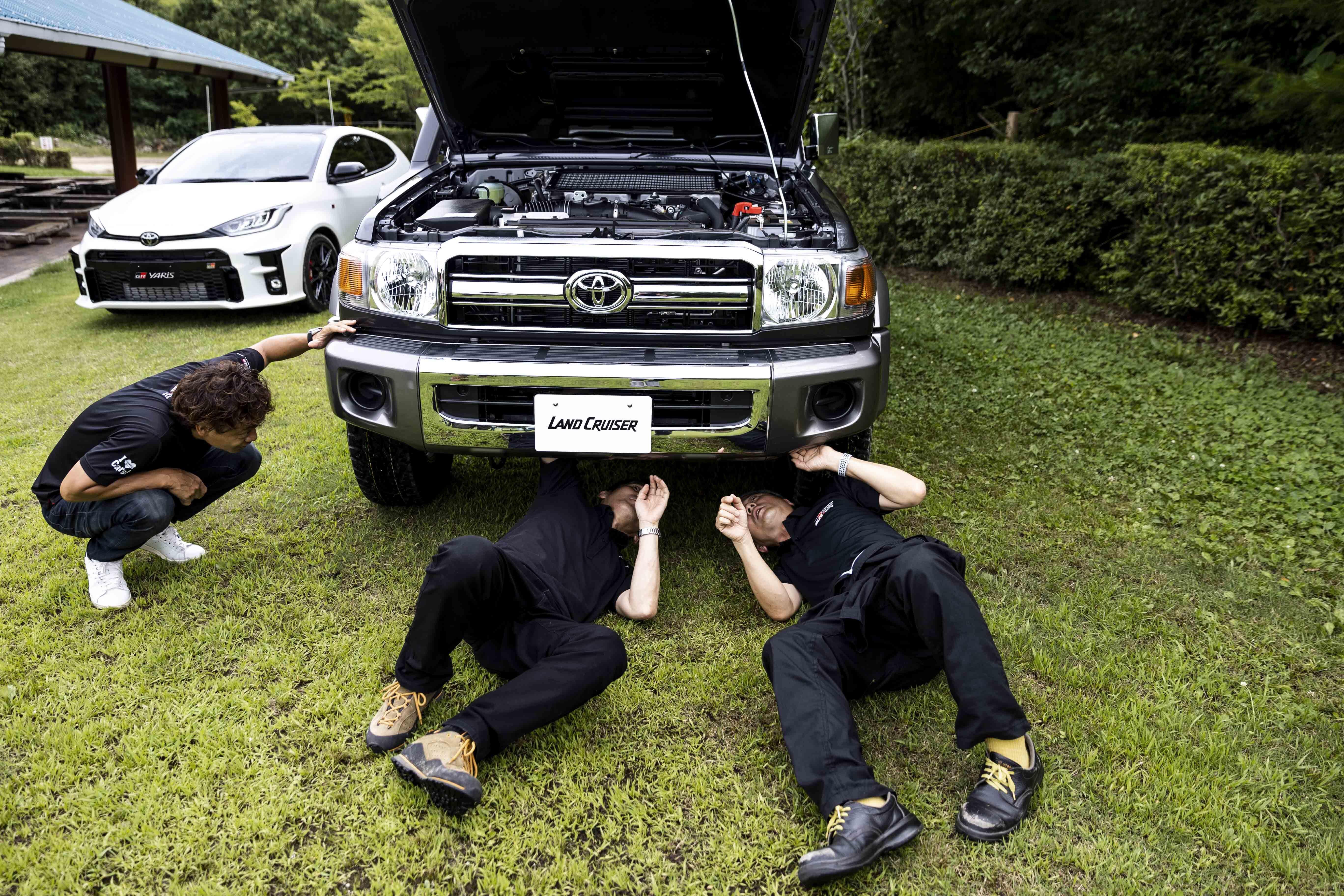
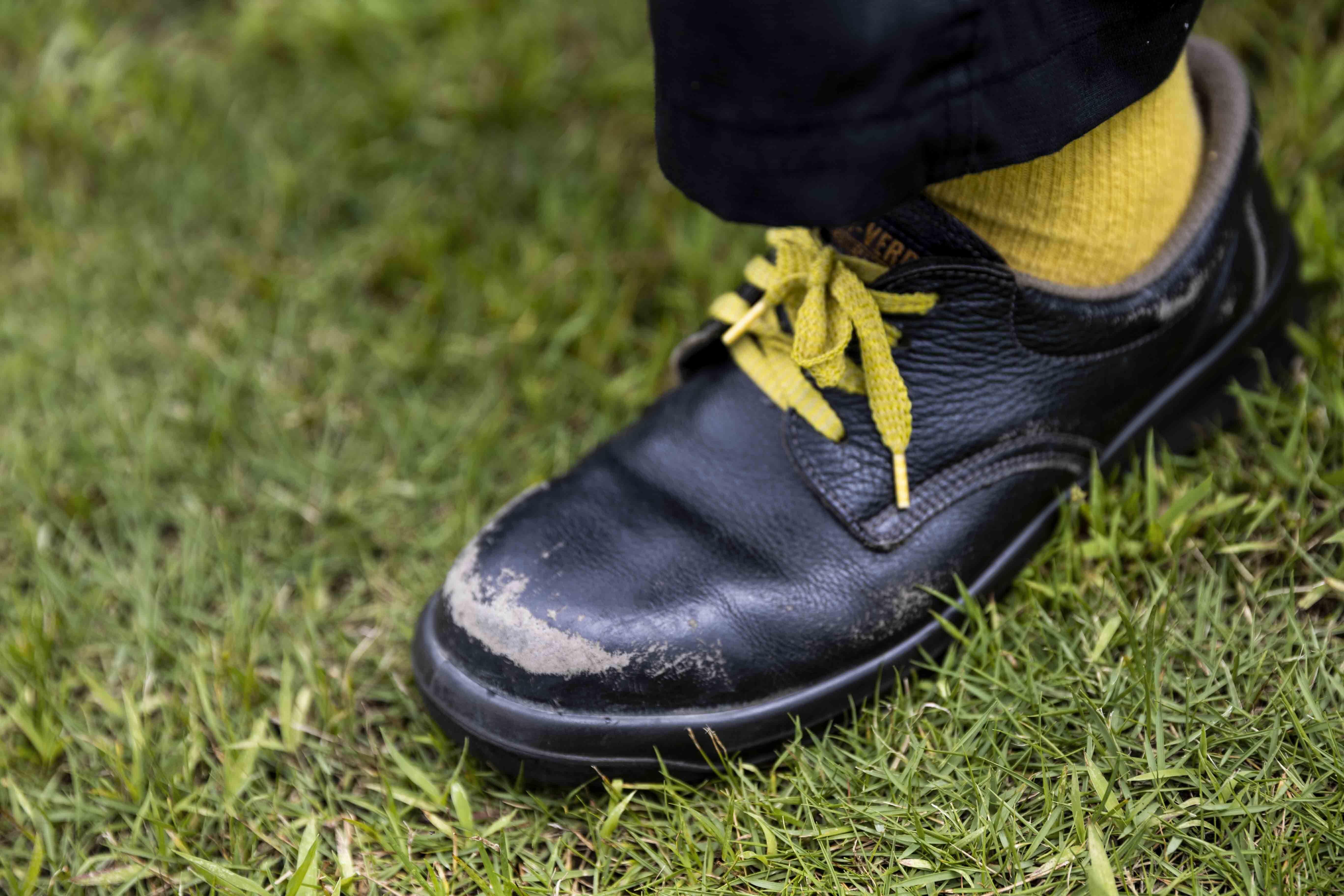
Koyari agreed and concluded by saying the following.
Koyari
Maybe I’m old fashioned, but you can’t make cars if you’re afraid of getting your hands dirty. I want young engineers to get their hands dirty, work hard, and make lots of mistakes. You can’t learn if you succeed at everything you do.
Looking back on my own past, I have a very strong desire to work hard for my customers as an engineer. I still have so much more I have to do, because I think the people higher up in the company have to work harder. An attitude like that is what makes a difference in the cars you make, which in turn helps to meet the needs of customers.
“Roads train people,” so they say. But enough can’t be said of the daily actions, attitudes and ambitions of the engineers who have strived to hone their skills.
Sadayoshi Koyari
Project General Manager, MS Product Planning, Mid-size Vehicle Company
Koyari joined Toyota Motor Corporation in 1985. As part of Engineering Division 1, he worked on chassis design for the Hilux and Land Cruiser Prado. From 1996, he was responsible for product development at Toyota Development Center 3; Since 2001, Koyari was involved in product development for the Land Cruiser and the new frame platform as Project General Manager. In 2007, he was appointed Chief Engineer at Toyota Development Center 1, and is currently in charge of the Land Cruiser 70 Series and the Land Cruiser Prado.
Naohiko Saito
Saito is in charge of development in the GR Project Operation Division at GAZOO Racing Company.
He joined Toyota Motor in 1997 after which he was placed in charge of solving technological issues in the overseas service division. He was transferred to Toyota USA for three years starting in 2001, during which time he oversaw genchi genbutsu at various locations throughout North America.
In 2004, he worked as Chief Engineer in developing the new LS at Lexus Center. In 2009, he was placed in charge of developing aerodynamic technology at Higashi-Fuji Technical Center. In 2013, he was placed in charge of planning and developing the next-generation Yaris at TC Company. Since 2016, he has been in charge of developing the GR Yaris.

